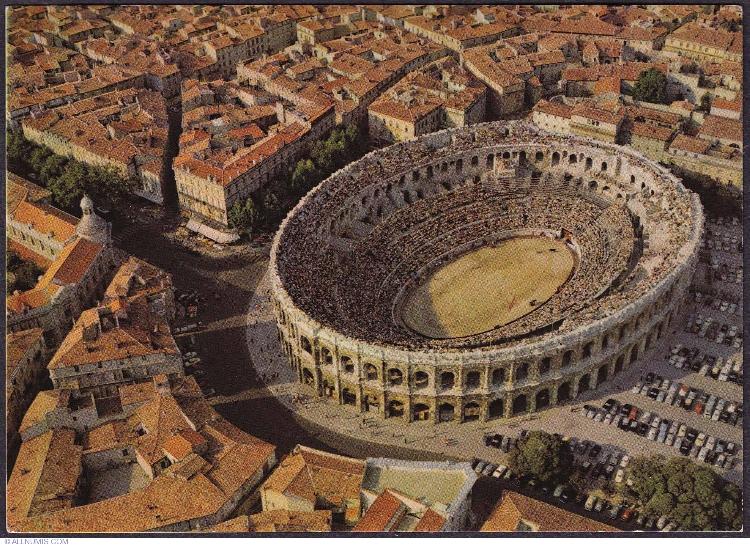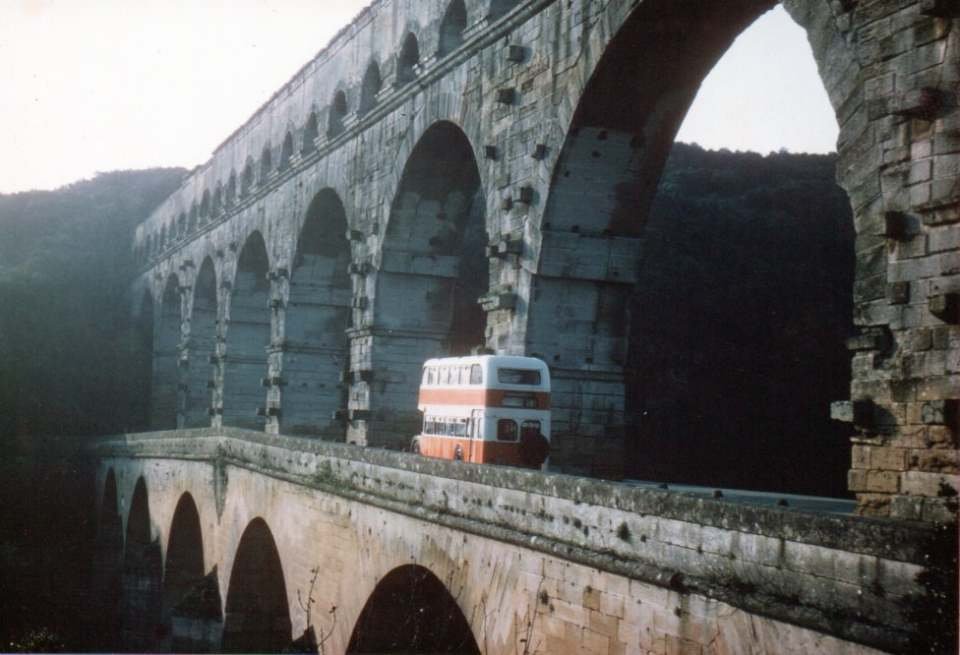
AsianOverland.net
Tour Guide - Itinerary
Asian Overland Sydney to London
Started 22/06/2022 Finished 21/06/2023365 Days ITINERARY
Day 178 date 16/12/2022VERSAILLES to PONT DU GARD, FRANCE
ASIANOVERLAND.NET WINTER EUROPEAN DAY 5/178: VERSAILLES TO PONT DU GARD, FRANCE
“DAY 5, 16/12/80, PONT DU GARD
The Pont du Gard is an ancient Roman aquaduct bridge built in the first century AD to carry water over 50 km to the Roman colony of Nîmes. It crosses the river Gardon, is the highest of all Roman aquaduct bridges, and is one of the best preserved. Great photo-stop for a top Deck group photo and tourist walk.
The bridge has three tiers of arches, stands 49 m high, and descends a mere 2.5 centimetres – a gradient of only 1 in 18,000 – while the whole aquaduct descends in height by only 12.6 m over its entire length, showing the great precision Roman engineers were achieved.
The aquaduct carried 40,000 m3 of water a day to the fountains, baths, coliseum (still in use for bullfights) and homes of Nîmes. It was used as late as the 6th century, with some parts used for longer, but lack of maintenance after the 4th century led to clogging by mineral deposits and debris that stopped the flow of water.
After the Roman Empire collapsed and the aquaduct fell into disuse, the Pont du Gard remained largely intact due to its importance as a toll bridge. For centuries the local lords and bishops were responsible for its upkeep, in exchange for the right to levy tolls on travellers using it to cross the river. Over time, some of its stone blocks were looted, and serious damage was inflicted on it in the 17th century. It underwent a series of renovations since the 18th century.
The location of Nîmes was inconvenient when it came to providing a water supply, although that didn't stop the Romans building one of the best coliseums outside of Rome itself. The Nîmes aquaduct was built to channel water from the springs of the Fontaine d'Eure near Uzès to Nimes, where it was distributed to fountains, baths and private homes around the city. The straight-line distance between the two is only about 20 km, but the aquaduct takes a winding route of 50 km. This was necessary to circumvent the southernmost foothills of the Massif Central, which are difficult to cross, as they are covered in dense vegetation and indented by deep valleys. It was impractical for the Romans to attempt to tunnel through the hills, as it would have required a 10 kilometre tunnel. A V-shaped course around the eastern end of the Garrigues de Nîmes was therefore the only practical way of transporting the water from the spring to the city.
© This work is copyright. Apart from any use permitted under the Copyright Act 1968, no part may be reproduced by any process, nor may any other exclusive right be exercised, without the permission of Peter Searle, peter@portseavillageresort.com; 1980-2024.
Website built by Justin O’Dea www.webdeveloperdocklands.com.au








